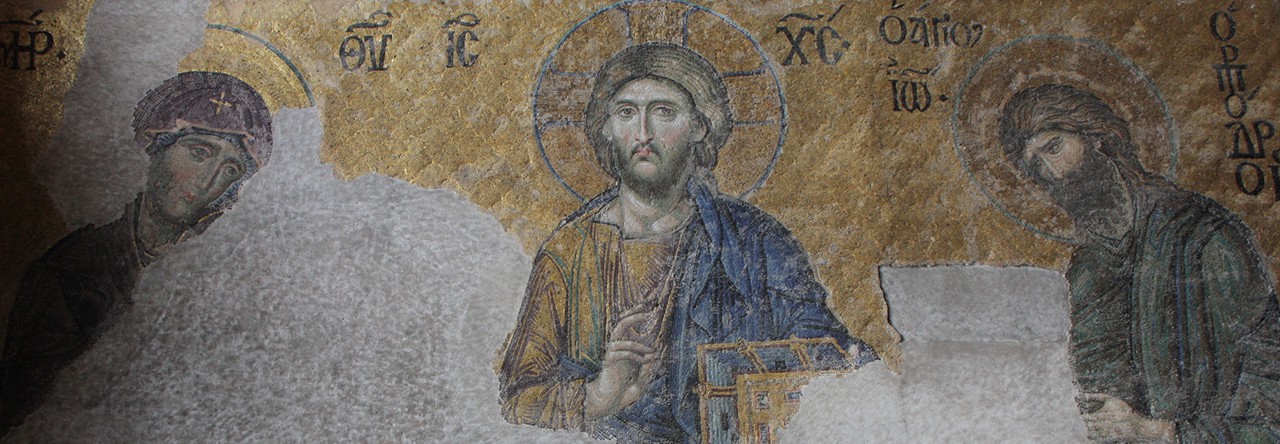In the previous blog, Envisioning the Temple (I), we began exploring the complex nature of the Temple, and the role it has played in scriptural spirituality both in the Old and New Testament. Adolfo Roitman in his pulchritudinous book, ENVISIONING THE TEMPLE, offers some ideas as to the importance of the Temple for humankind not to mention for the people of God.
“According to Mircea Eliade, sacred space enables those who are lost or confused, desperately seeking a foothold in a chaotic and meaningless reality, to seize hold of a certain point in infinite space, and from that point to organize their life in society, as did the gods during the creation of the universe.” (Roitman, p 12)
A temple is that sacred space argues Roitman which stands against the chaos and meaninglessness which so often threatens to overwhelm humanity. We can be overcome by the storms of life (whether natural or man made), but it is the interpretation that we place on them which truly threatens to overwhelm the human spirit. A temple on the other hand from the earliest days of humanity signified there were forces in the universe which controlled the chaos and which gave meaning to any events.
 Building a temple, like building a society and culture are ways in which humans push against senseless emptiness. Human cooperation can overcome even fate and the randomness of natural selection.
Building a temple, like building a society and culture are ways in which humans push against senseless emptiness. Human cooperation can overcome even fate and the randomness of natural selection.
“In other words, human settlement is a process similar to the cosmogonic acts of the gods: every area conquered for purposes of habitation had first to be converted from ‘chaos’ to ‘cosmos’.” (Roitman sidenote 1, p 12)
Judaism believed God was both creator and architect of the universe. God was bringing order to the chaos. God wished creation to be a temple in which he dwelt and was worshipped by His human creatures. It is God who revealed the nature of a temple to His chosen people.
“A closer look at Jacob’s behavior reveals that believers do not consider the erection of a shrine as an architectural act in the context of human culture; they see it as the consequence of divine action.” (Roitman,p 14)
As noted in the previous blog both Moses and David claimed to have received a plan/design/blueprint from the hand of God for constructing on earth a temple which was a copy of what God conceived of a temple.
The existence of the temple is an acknowledgement also of the reality of chaos and darkness  and meaninglessness in this world. Yet the temple stands as sign and symbol that a greater force also is present in the universe ever fighting against that senseless emptiness. The temple spoke of the God who was more powerful than all the forces of random nothingness however mighty and destructive they may be.‘
and meaninglessness in this world. Yet the temple stands as sign and symbol that a greater force also is present in the universe ever fighting against that senseless emptiness. The temple spoke of the God who was more powerful than all the forces of random nothingness however mighty and destructive they may be.‘
“In other words, it lay within the power of the Absolute Other, the god encountered in the sanctuary, to effect change in people’s personal, national, and cosmic lives, and in so doing to infuse chaotic reality with existential meaning.
In the eyes of the believer, therefore, the destruction of such sites was a tragedy of cosmic proportions. If the temple symbolized the victory of the gods over the forces of chaos in the act of Creation, its destruction surely signified a return to primeval chaos and symbolized the loss of the foundation on which individual and communal life rested.” (Roitman, p 16)
The total destruction of the temple was a catastrophic event in Judaism more than once. And yet within this temple tradition there was an idea and ideal about a temple not made by hands but a spiritual and living temple. There came an increasing realization of the limits of the temple as building and a new vision of a temple which was not a building.
“In Solomon’s prayer… the possibility that God could dwell in the Temple is emphatically rejected (1 Kings 8:27). The text states that only God’s ‘name’ dwells in the Temple (v.29); the actual ‘abode’ of the Almighty in in heaven (vv. 39, 43, etc). The conception of the Temple’s primary purpose therefore changes accordingly, and the focus is no longer on the sacrifices, but on the prayers that will be offered up (vv.28ff.).” (Roitman sidenote, p 53)
“Jesus answered them, ‘Destroy this temple, and in three days I will raise it up.’ The Jews then said, ‘It has taken forty-six years to build this temple, and will you raise it up in three days?’ But he spoke of the temple of his body. When therefore he was raised from the dead, his disciples remembered that he had said this; and they believed the scripture and the word which Jesus had spoken.” (John 2:19-22)



Pingback: Envisioning the Temple | Fr. Ted's Blog
Pingback: Orthodox Collective
Great blog. I was in Israel about 20 months ago. We were able to see a miniature Temple. It was built to scale. The opportunity to see the Temple helped me “see” the Scripture a little differently.
Thanks for your comments. Seeing the scripture differently is a big part of our understanding how they reveal God to us!
Amen.
Pingback: The Temple and a New Vision | Fr. Ted's Blog